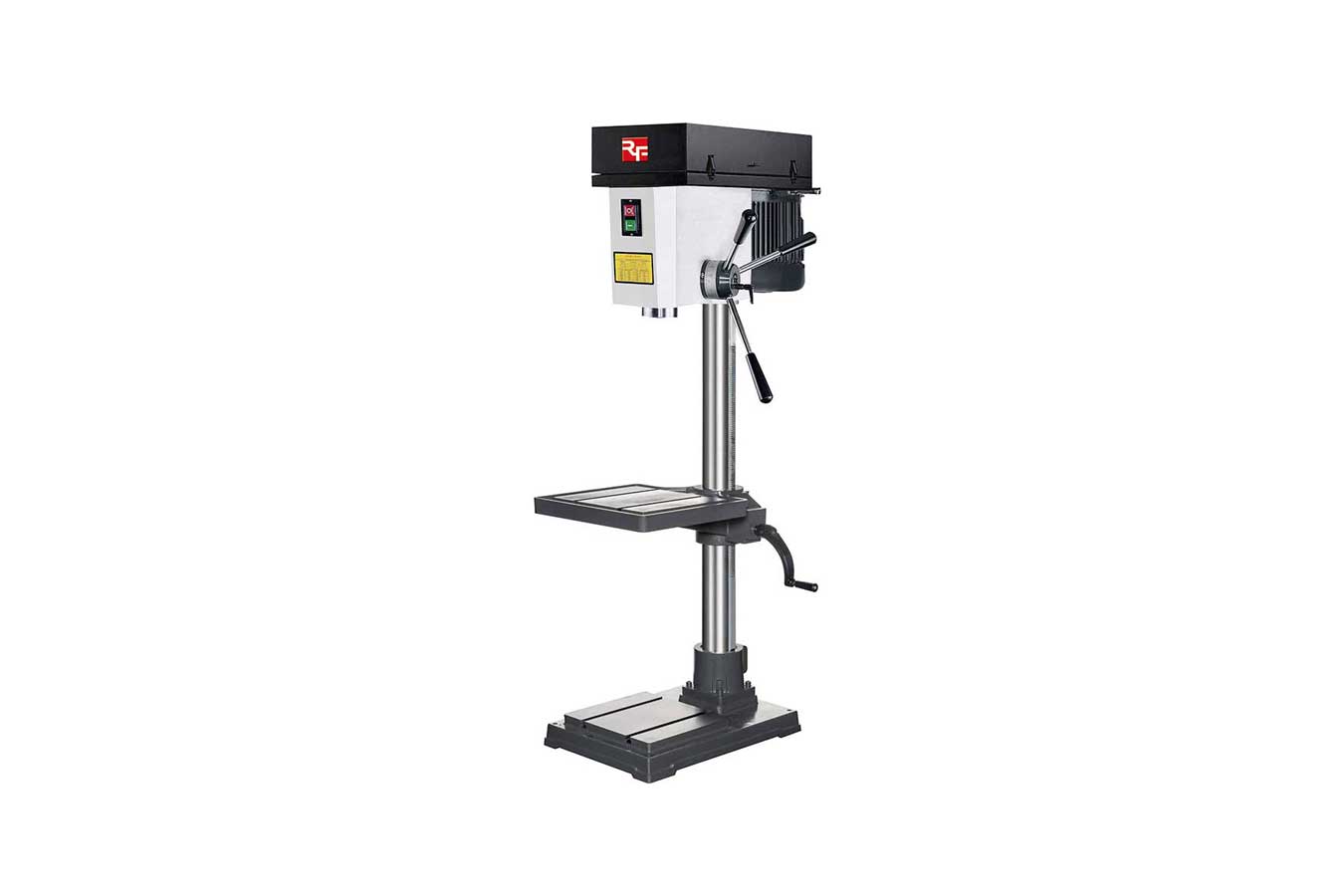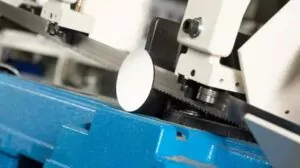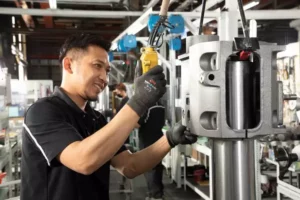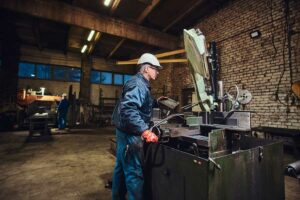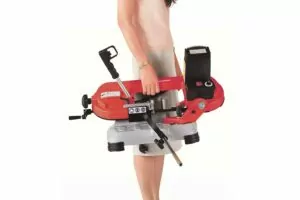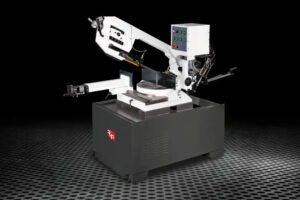Before you invest in a drill press or mill drill, make sure you know which one is best suited to your business requirements
What’s The Difference Between A Drill Press And A Mill Drill Machine?
- Typical Drill Presses & Mill Drill Machines
- Mill Drills Cut In Any Direction
- Some Drill Presses Have Mill Drill Features
Table of Contents
Typical Drill Presses & Mill Drill Machines
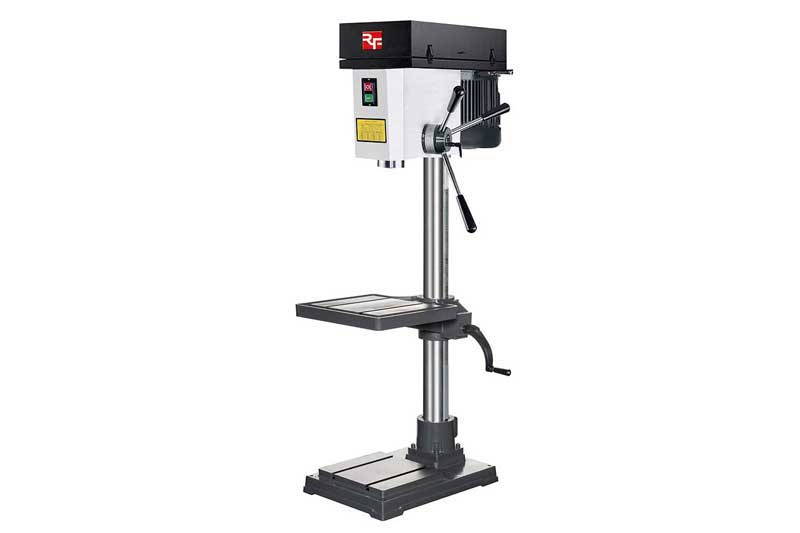
The Rong Fu RF-19 (above) is a typical floor standing drill press, and is very popular with small workshops. The RF-45 (below) is a bench mounted milling drilling machine. At first sight they look quite similar – they both have a vertically mounted spindle for drilling and cutting bits.
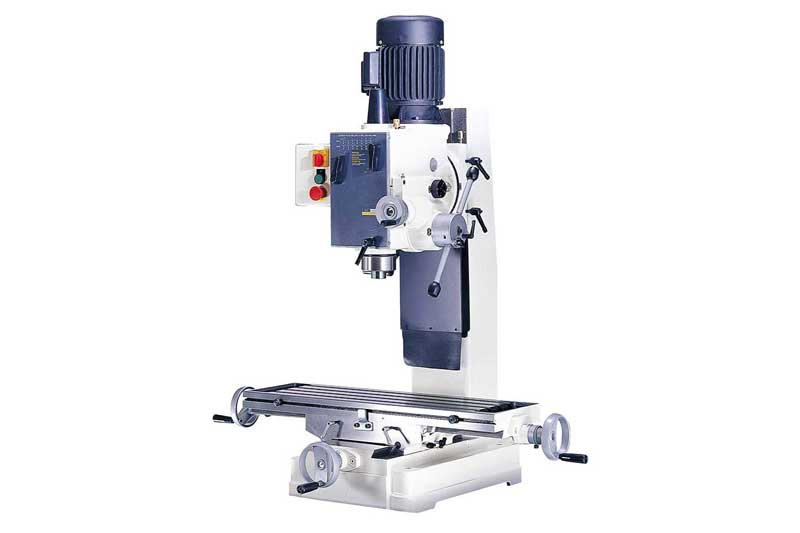
The principle of operation is the same, you fit a cutting tool into the head, and both mill drills and drill presses spin the tool at variable speeds to cut away material from stock clamped to a work table.
What makes the difference between a drill press and milling drilling machine is how much freedom you have to change the cutting direction and angle during operation. Generally a drill press is limited to one axis of operation, but a mill drill can cut in the x, y or z axis.
Mill Drills Cut In Any Direction
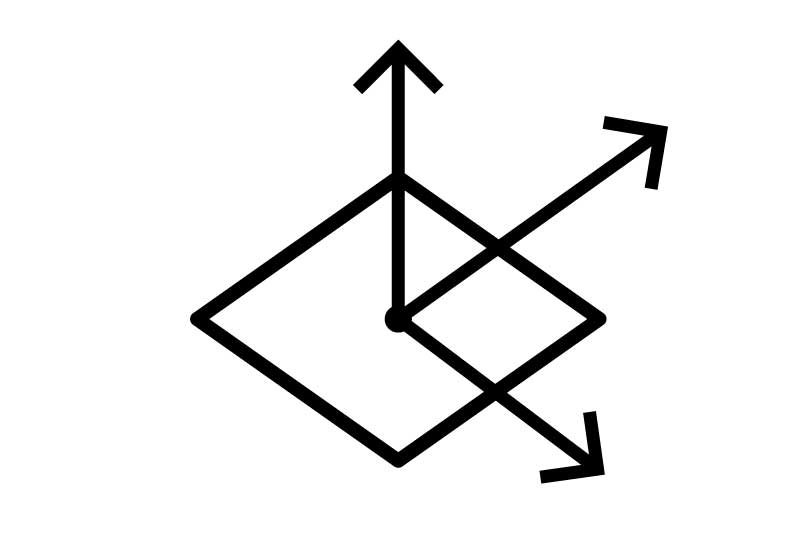
Most drill presses can only move the drill head up and down, but not from side to side or forwards and backwards over the workpiece. The stock to be drilled is clamped in position under the drill head on a fixed table and the drill is lowered to cut into the stock. This is a very simple arrangement, and makes drill presses a very cost effective tool for rapidly drilling holes.
The main difference between mill drills and drill presses is that the mill drill work table can be moved by the operator, enabling them to use the mill drill to cut across the faces of the workpiece as well as drilling into it.
Mill drills have similar motors to drill presses, but the head is designed to withstand sideways and angled forces that are caused when face milling and chamfering. Drill press heads are more lightly built for the same cutting capacity as drilling generates more balanced forces than milling.
Both mill drills and drill presses may allow you to change the orientation of the drill head, and this is where some drill presses can have useful milling capabilities but are not as versatile as a true drill press.
Some Drill Presses Have Mill Drill Features
It can get confusing when some drill presses are able to also do face cutting, like a mill drill machine. The radial drill press below is the Rong Fu RF-35, which can do some face milling, tapping and end milling because it has a radial head that can be put in almost any position.
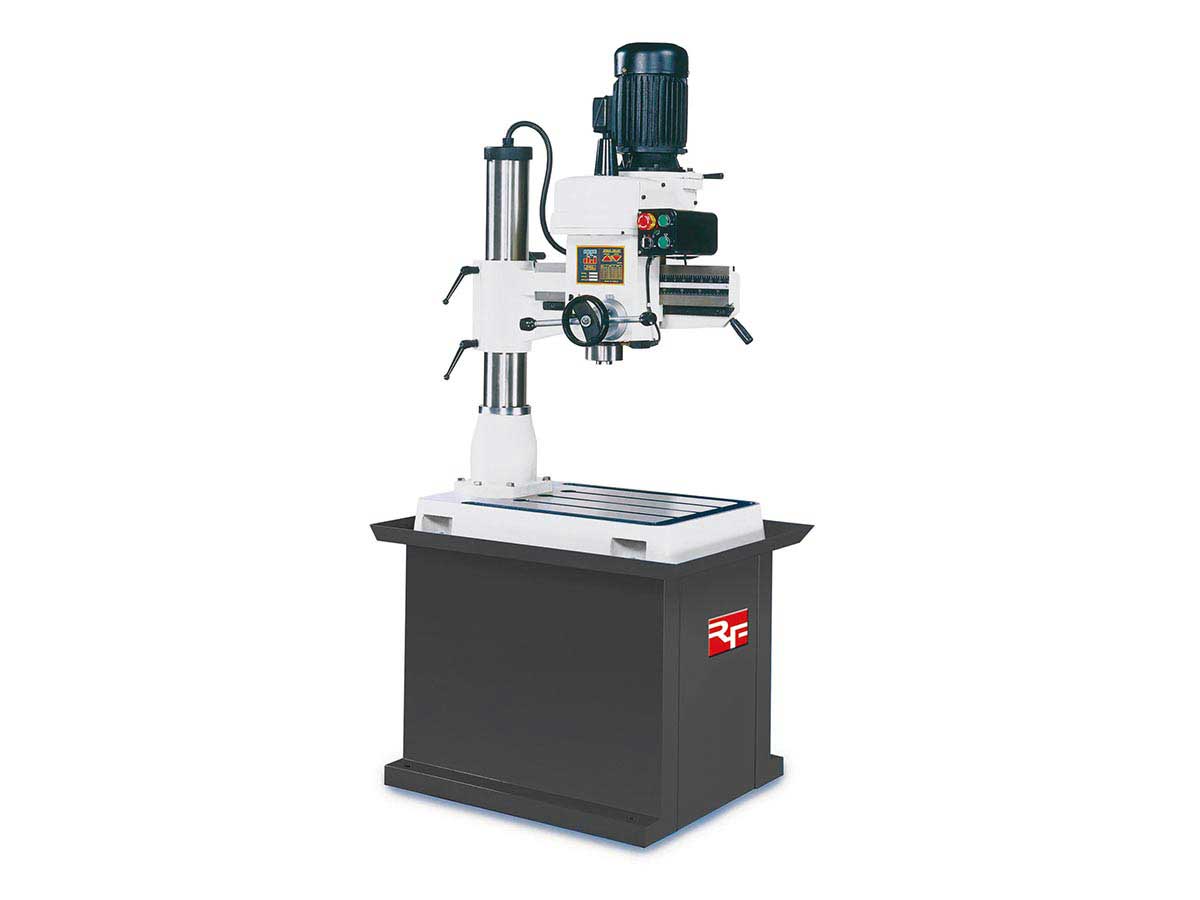
This is very useful if you usually do a lot of drilling but occasionally need to perform some tapping, polishing or end milling work, but not enough to make it cost effective to buy a mill drill.
How To Choose A Drill Press Or Mill Drill Machine
- Drilling Or Milling?
- Size, Speed, Features & Capacity
- Precision
- Production Volume
- Value Added
Drilling Or Milling?
The first question to ask is if you are drilling or milling. Obviously if you never do any milling and don’t expect to need to do any, then you might think a drill press is all you need. Bear in mind that even if you do sometimes need to do some simple milling then an advanced drill press with a radial head like the RF-35 might satisfy your needs.
There are times when a milling drilling machine might be a better choice even if all you need to do is drill vertical holes, and that is because of the advantages a mill drill has in accurate clamping and positioning of the workpiece. If you are cutting slots or cutting material to a specific dimensional measurement, a mill drill is the only practical choice.
Size, Speed, Features & Capacity
Because they use similar motors and tool types, drill presses and mill drills are available in a similar range of sizes and work capacity. They also come in both stand alone and benchtop versions. For small workshops a benchtop drill press or mill drill is a good space-saving alternative to a free standing machine.
Cutting speeds are controlled by gears or drive bands depending on the model, and both drill presses and mill drills are available with both powered and unpowered down feeds. Quick eject spindles and push-button speed controls are useful time saving features if you have a high production volume.
Capacity of mill drills and drill presses is another important consideration – you need to be sure that your workpiece will fit, so check the specifications to ensure it is big enough.
Precision
Generally, milling drilling machines are more positionally accurate than drill presses, this is because the work table is designed to clamp the work and then move it very precisely in three dimensions. This allows for repeated machining of stock with a high degree of accuracy.
Drill presses rely on the operator setting the work in the clamp in exactly the right place to get positional accuracy. Even if the operator uses a pre-set jig this means there are usually slight errors in positioning, which on a mill drill machine are easily corrected by moving the work table to ensure the cutting tool is perfectly lined up.
Production Volume
Production volume is an important consideration in terms of cost and time. If you need to carry out a large number of cutting or drilling tasks the time taken by the operator for machine setup can be significant. Both drill presses and mill drills come in similar ranges of cutting power and capacity, to enable faster cuts, but have different setup requirements.
Irregular objects are more difficult to clamp accurately than symmetrical stock. If you have a large production volume and hard to clamp objects it might be better to use a milling drilling machine than a drill press to drill vertical holes because you can precisely correct clamping alignment by adjusting the work table position.
You may find that if you need to do both milling and drilling it might be better to have both a drill press and a milling drilling machine to reduce setup time. If you only need to drill holes in a large number of identical symmetrical (easily clamped) components, a drill press is likely to be the fastest option.
Value Added
Milling drilling machines are more expensive than drill presses of a similar size, but are more versatile. For high precision, high value work a mill drill is likely to be the best choice. For any work requiring high quality face cutting and finishing a mill drill is also the best solution.
For repetitive drilling of vertical holes a drill press is the logical choice. A mill drill will give you a more precise and accurate result, but this may not be necessary depending on the engineering tolerances you require.
If you visit any machine shop you will usually find more mill drills than drill presses simply because they are more accurate and more versatile, enabling you to complete a wide range of machining jobs. Over time this makes up for the higher cost compared to a drill press.
A Mill Drill Or Drill Press For Every Task
At Rong Fu we manufacture milling drilling machines and drill presses suitable for uses ranging from home workshops through small machine shops to large factory installations. Have a look at our lineup of mill drills and drilling machines and contact us to discuss your specific requirements.

